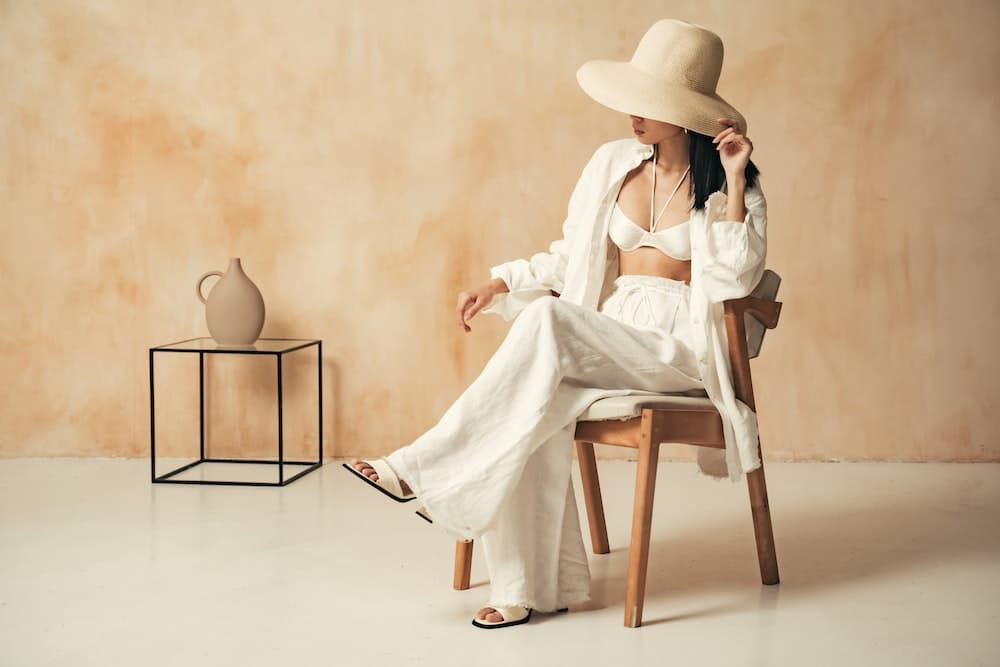Secrets of renowned designers for creating luxurious and elegant living spaces

In the world of interior design, some designers are emerging as masters of the art of creating living spaces that embody luxury, elegance and comfort. Their creations transcend the imagination and inspire homeowners around the world to seek advice on transforming their own homes. In this article, discover some secrets from renowned designers for transforming spaces.
The designer's vision: understanding the client's needs
In the interior design sphere, every project begins with a vision. Therefore, When it comes to creating luxurious living spaces, the secret of designers lies in their ability to combine innovation and respect for tradition. This vision is shaped by a deep understanding of the client's needs, desires and personality. The designer's mission is to transcend simple physical spaces to create environments that truly reflect the essence and style of his clients.
This might interest you : Grey tiles: the top choice for low-maintenance, high-style floors
Active listening
The first step to understanding the customer's needs is active listening. You must take the time to listen carefully to what the client is expressing, paying particular attention to their aesthetic preferences, functional goals and budgetary constraints. This attentive listening allows you to gather valuable information that will serve as a foundation for your design work.
Environmental and lifestyle analysis
In addition to discussions with the client, it is essential to conduct a thorough analysis of the environment in which the project will be carried out and the client's lifestyle. You will examine the architectural features of the space, available natural light, and the client's lifestyle habits and daily routines. This analysis helps us identify the unique challenges and opportunities presented by the project.
In parallel : National energy policy
Creating a customer profile
Based on the information collected, you create a detailed profile of the customer, highlighting their likes, dislikes, aspirations and values. This client profile becomes your guide through the design process, helping you make decisions that are in alignment with the client's vision and goals.
Ongoing collaboration
Collaboration with the client is essential at every step of the process. You share your ideas and concepts with the client, soliciting their feedback and suggestions to ensure your vision fully meets their expectations. This ongoing collaboration ensures that the client feels fully invested in the design process and confident in the end result.
Finally, as a designer, you must be flexible and adaptable to meet the changing needs of the client. you will be ready to adjust your vision and plans based on new information and project developments, ensuring that the end result exceeds the client's expectations.
The balance between functionality and aesthetics
One of the biggest challenges designers face is finding the right balance between functionality and aesthetics. While functionality ensures that the space meets the practical needs of its occupants, aesthetics are key to creating a visually appealing and harmonious environment.
The first step in finding the balance between functionality and aesthetics is to understand the needs and preferences of the users of the space. It is essential to consider the lifestyle, daily routines, habits and aesthetic preferences of those who occupy the space. This in-depth understanding of the user's needs will serve as a solid foundation for designing the space.
Functionality should be the top priority in the design of any space. Designers must ensure that the space meets the practical needs of its occupants, providing solutions that improve daily life and facilitate daily activities. This can include things like efficient storage, ergonomic work areas and smooth flow of space.
Occupant comfort is also a fundamental aspect of the functionality of a space. Designers must consider factors such as temperature, lighting, acoustics and air circulation to create an environment that promotes well-being and productivity. Ergonomic furniture choices and comfortable materials also help create a welcoming and functional environment.
Selection of iconic furniture
The selection of iconic furniture is a key element in creating an elegant and timeless interior. Selecting iconic furniture is a sure way to add a touch of style and sophistication to any interior. Whether you opt for the Eames Lounge Chair, Tulip Table, Barcelona Armchair, LC2 Sofa or Wassily Chair, these iconic pieces will continue to inspire and delight design lovers everywhere for years to come.
Play with lighting and space layout
Lighting and the layout of spaces are two essential elements in creating a captivating and harmonious atmosphere in an interior.
Ambient lighting is the foundation of any lighting design, providing soft, diffused light that fills the space evenly. To create a warm and welcoming ambiance, opt for ceiling lights, table lamps or wall sconces that diffuse light evenly throughout the room. This soft light creates a soothing atmosphere and invites you to relax.
Task lighting is essential for illuminating work areas and highlighting key features of the room. In a kitchen, for example, under-cabinet lights effectively illuminate the countertop, while recessed lighting above the island creates a stylish focal point. In a living room, reading lamps near a comfortable armchair provide focused lighting for reading or leisure activities.
Use unique art and pieces
Art and unique pieces are essential elements in creating an interior that tells a story and reflects the personality of its occupants.
Art can serve as a focal point in any room, drawing the eye and adding a captivating visual dimension to the space. Opt for artwork that speaks to your personal style and evokes emotion. A vibrant painting, intriguing sculpture, or inspiring photograph can become the center of attention in the room, creating a visual focal point around which the entire decor can revolve.
Unique pieces, whether antique furniture, craft objects, or vintage finds, bring a touch of originality and character to an interior. These pieces often tell a story and spark curiosity, serving as a starting point for fascinating conversations with guests. By integrating unique pieces into your decor, you create an environment that invites exploration and discovery.
Case studies of projects from renowned designers
Projects by renowned designers are often the result of creative vision, technical expertise and meticulous attention to detail. Studying these projects provides a unique opportunity to explore the innovative design concepts and exceptional achievements that have transformed ordinary spaces into extraordinary environments.
The Vipp Loft, Copenhagen, Denmark: Designer studio David Thulstrup
The Vipp loft in Copenhagen is a stunning example of transforming an industrial space into a modern and sophisticated residence. Designer David Thulstrup managed to preserve the raw essence of the old workshop while introducing contemporary design elements and luxury touches. Raw materials such as concrete and steel blend harmoniously with warm wood elements and leather accents. The end result is a spectacular living space that combines functionality, comfort and aesthetics.
Project: The High Line Apartment, New York, United States: Designer: Neal Beckstedt Studio
Located along the High Line in New York, this apartment offers stunning city views and a vibrant urban setting. The Neal Beckstedt Studio has captured the essence of city living by integrating contemporary design elements and luxury touches into this high-end living space. Refined materials such as marble, brass and walnut wood create a sophisticated and elegant atmosphere, while large floor-to-ceiling windows allow natural light to flood the interior,
Conclusion
Through their talent and creativity, renowned designers transform ordinary spaces into extraordinary environments, capturing the imagination and elevating the aesthetic of each room. Their ability to merge functionality and aesthetics, to play with light and the layout of spaces, and to integrate art and unique pieces brings to life interiors that tell a story and mark the personality and lifestyle of their occupants.
